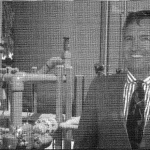Automatic Savings, Civil Engineering Magazine
Walnut Creek, Calif., 1 June 1998 — In the last several years, growth in the environmental remediation industry has slowed. One reason is that at many contaminated sites remedial construction activities have been completed and the operation and maintenance (O&M) phase has begun. However, this slow growth, accompanied by increased competition, does not necessarily translate into cost savings for the owners of contaminated sites with long term O&M requirements.
Long-term O&M costs often dwarf engineering and remedial construction costs, but they don’t have to. By negotiating with regulators for adequate cleanup standards, reducing labor through automation and standardizing environmental reporting and record keeping, site owners often can shut down a system early or reduce the long term operating costs of environmental treatment systems by 30% to 50%.
Construction of a $1 million groundwater treatment plant operated for 30 years or more, for example, typically would be preceded by five years of consulting, regulatory negotiation and engineering costs. These initial costs would total about $300,000. After construction, the O&M phase might continue for 30 years. If the initial O&M cost is $40,000 per year and the inflation rate is 3%, the true future cost of O&M exceeds $2 million, which is substantially higher than consulting, engineering and construction costs combined (see Remedy Total Cost). Even a 10% reduction in O&M costs can produce enormous savings in the long run. The following four strategies can help to lower overall O&M costs:
- Negotiate with regulators to reduce O&M requirements
- Design a system that will require less servicing
- Automate the system so that human factors play a minimal role in routine tasks
- Computerize environmental data management and reporting
The ability to influence overall project costs is greater at the early stages of development. The engineers and scientists involved in the project need to establish a scientific approach to determining when to shut down in situ remediation systems, such as groundwater treatment or soil vapor extraction processes. These processes typically provide an initial rapid decline in contaminant concentrations, followed by a gradual flattening of removal efficiency over time.
Contaminant levels eventually get so low that the system can no longer reduce them. In many cases, the contaminant concentration may be higher than the cleanup standard, but continued operation of a treatment process in this situation is unwarranted, wasteful and ineffective. No discernable benefit can be obtained.
A policy for shutting down a treatment process that is based on the rate of change of the concentration versus time could save millions of dollars in cleanup costs. This would be consistent with Californian’s Containment Zone Policy. The policy, adopted in October 1996, recognizes the futility of trying to remediate groundwater to drinking water standards without considering technological and economic limitations.
In addition, a shutdown standard based on science could justify an impracticability waiver from the U.S. Environmental Protection Agency, based on the inability of the system to achieve required cleanup levels using available remedial technology. This approach offers the owner an opportunity to shut down a system early and renegotiate sampling and reporting frequency. When a system can no longer significantly reduce the concentration of contaminants, groundwater concentrations change slowly. Frequent well sampling and monitoring are unjustified and wasteful.



